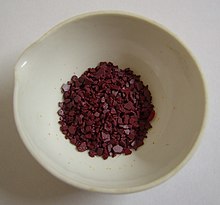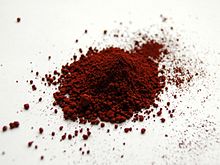Chemical compound
A chemical compound is a chemical formed from atoms of different chemical elements. The different atoms are joined by chemical bonds. Each compound has a fixed ratio between the elements.




The elements stick together so strongly that the compound behaves like it is one substance. The chemical that is made depends upon what atoms it is made of and how they are joined together.
Many compounds are made of separate molecules. Each molecule has the exact same number and types of atoms. For example, every water molecule has one oxygen atom and two hydrogen atoms. Other compounds are made of a large network of atoms. For example, sodium chloride always has equal numbers of sodium and chlorine atoms, but there are no separate molecules.
Chemical compounds can be solids like sodium chloride, liquids like water, or gases like carbon dioxide. We get compounds from natural sources such as plants or make them in laboratories. Compounds can be made from others by scientists and these are called synthetic chemicals.
When different compounds are mixed together they may have a chemical reaction. Some chemical compounds can be dangerous but are safe if they are used the right way. Most dangerous chemicals are only used by scientists who have had special training in how to handle and use them. These chemicals might be poisonous, corrosive, explosive, they may catch fire easily, or they may react with other substances.[1]
People who work in factories near chemicals often wear special clothes that stop the chemicals from hurting their body.
References change
- ↑ Devlin, Jacinta; Cochrane, Helen; Coffey, Rhonda (2005). "1". Science Links 2 (VELS ed.). Heinemann. p. 22. ISBN 1740815203.